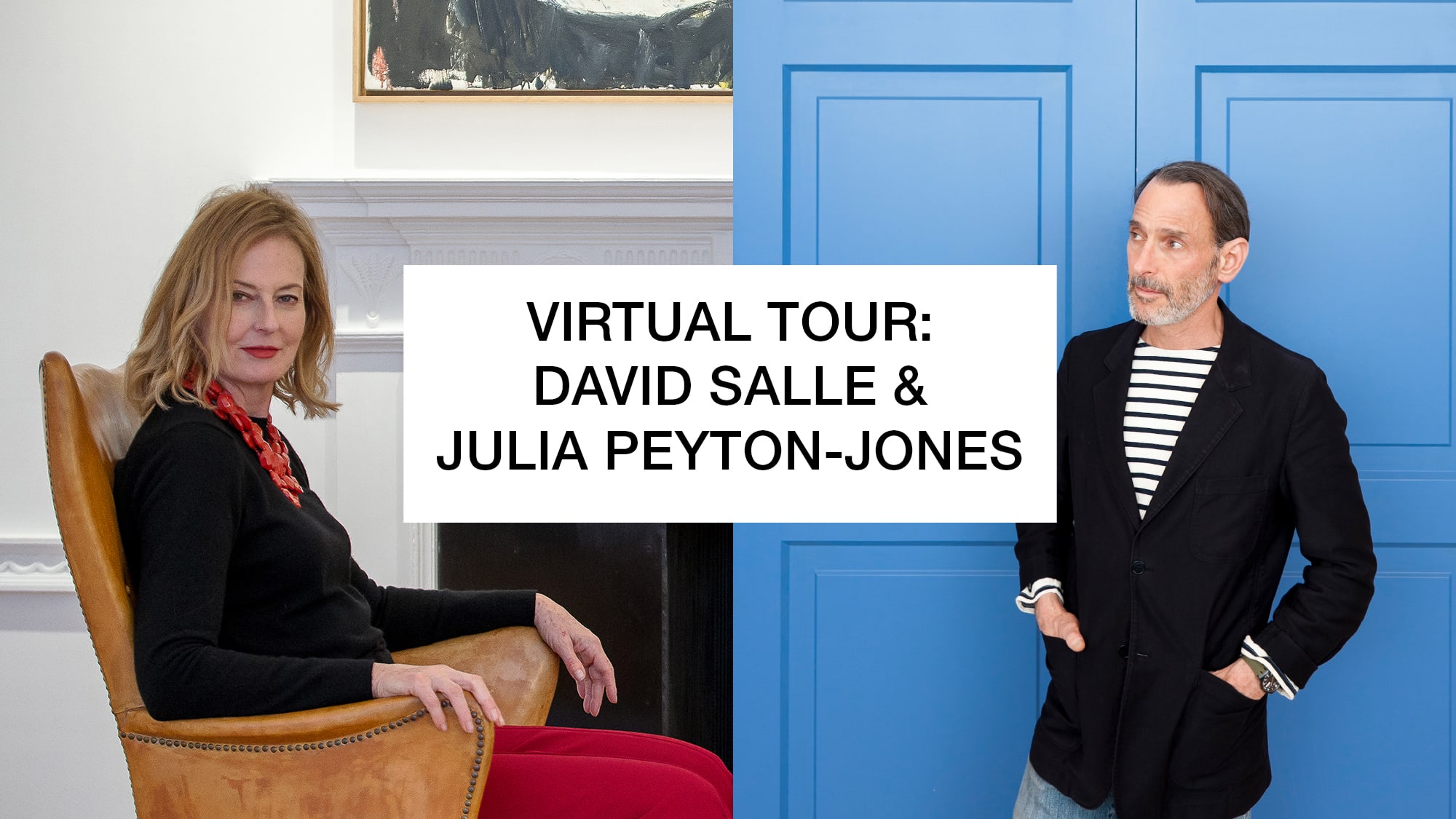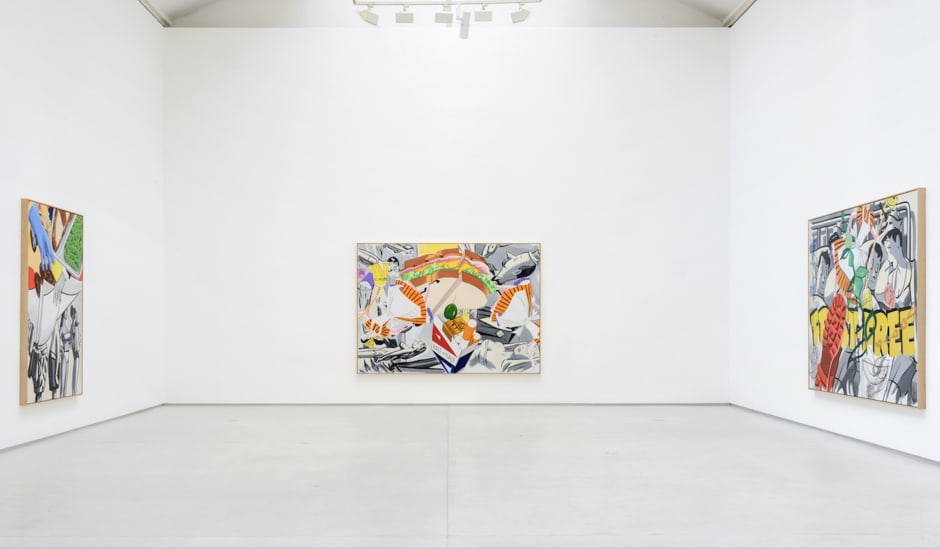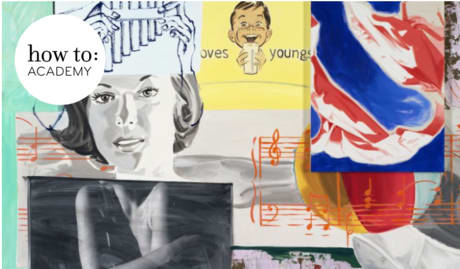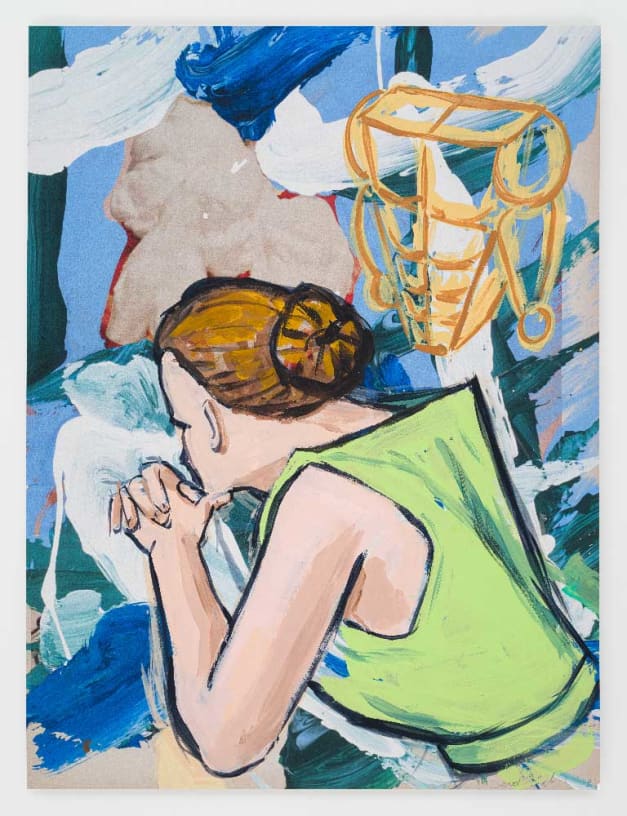

David Salle
Overview
'Some images reveal something deep about how the world works; it seems as though they can access how consciousness is structured. Paintings exist in the present tense, yet somehow, because of how they are structured, can move backwards through time as well.'
David Salle's paintings are immediately recognisable for their juxtaposition of contrasting visual elements that he appropriates from popular culture, spanning cartoon imagery, advertising, graffiti and the history of art. By combining seemingly unrelated images in diverse representational styles that seem to float past one another in virtual space, he plays with viewers' aesthetic expectations and sense of perspective. Using cinematic techniques such as montage and superimposition, he creates a world of simultaneity and equilibrium that establishes dynamic and even absurd relationships. The artist reflects on the constant input of images and ideas from the media-dominated world, which become part of the collective consciousness and, in turn, influence our own sense of self.
For Salle, painting – like language or poetry – emphasises the counterbalancing of contrasting elements: 'compression, juxtaposition, simultaneity, resistance to closure, dissonance [...] It makes free use of surprising and abrupt transitions and juxtapositions. It seeks to distil entire blocks of emotion and complex experiences into the telling detail, the closely observed fragment that stands in for the whole.' Containing allusions to Pop art, Surrealism and Abstract Expressionism, as well as cartoons from the 1950s and 1960s, his works combine various iconographies and formal qualities. Their kaleidoscopic effects seem to reflect a constant stream of simultaneous thoughts, feelings and visuals, constituting a humorous and even ironic commentary on contemporary life and the status of painting itself.
David Salle's paintings are immediately recognisable for their juxtaposition of contrasting visual elements that he appropriates from popular culture, spanning cartoon imagery, advertising, graffiti and the history of art. By combining seemingly unrelated images in diverse representational styles that seem to float past one another in virtual space, he plays with viewers' aesthetic expectations and sense of perspective. Using cinematic techniques such as montage and superimposition, he creates a world of simultaneity and equilibrium that establishes dynamic and even absurd relationships. The artist reflects on the constant input of images and ideas from the media-dominated world, which become part of the collective consciousness and, in turn, influence our own sense of self.
For Salle, painting – like language or poetry – emphasises the counterbalancing of contrasting elements: 'compression, juxtaposition, simultaneity, resistance to closure, dissonance [...] It makes free use of surprising and abrupt transitions and juxtapositions. It seeks to distil entire blocks of emotion and complex experiences into the telling detail, the closely observed fragment that stands in for the whole.' Containing allusions to Pop art, Surrealism and Abstract Expressionism, as well as cartoons from the 1950s and 1960s, his works combine various iconographies and formal qualities. Their kaleidoscopic effects seem to reflect a constant stream of simultaneous thoughts, feelings and visuals, constituting a humorous and even ironic commentary on contemporary life and the status of painting itself.
Born in 1952 in Norman, Oklahoma, Salle lives and works in Brooklyn, New York. He studied at the California Institute of the Arts from 1970–75, where he was mentored by Conceptual artist John Baldessari. It was there that he first developed a strong interest in cinema and montage, as reflected in his earliest works. He came to prominence in the 1980s as a leading figure of the Pictures Generation, who questioned the status of the image through appropriation and the exploration of mass media. Salle's first solo museum exhibition was at the Museum Boijmans Van Beuningen, Rotterdam in 1983, followed by his first retrospective in 1999 at the Stedelijk Museum, Amsterdam, which travelled to the Museum moderner Kunst Stiftung Ludwig Wien, Vienna; Castello di Rivoli Museo d'Arte Contemporanea, Turin, Italy; and Guggenheim Bilbao, Spain. His work has since been shown at institutions including The Museum of Modern Art, Metropolitan Museum of Art, and Whitney Museum of American Art in New York, and the Los Angeles County Museum of Art, among others. In 2016, a solo exhibition was held at the Centro de Arte Contemporáneo de Málaga. Salle is also a prolific writer and critic whose essays and interviews have been published in Artforum, Art in America, Modern Painters, The Paris Review and The New York Review of Books, as well as in numerous exhibition catalogues and anthologies. His collection of critical essays, How to see, was published by W. W. Norton in 2016.
Selected works


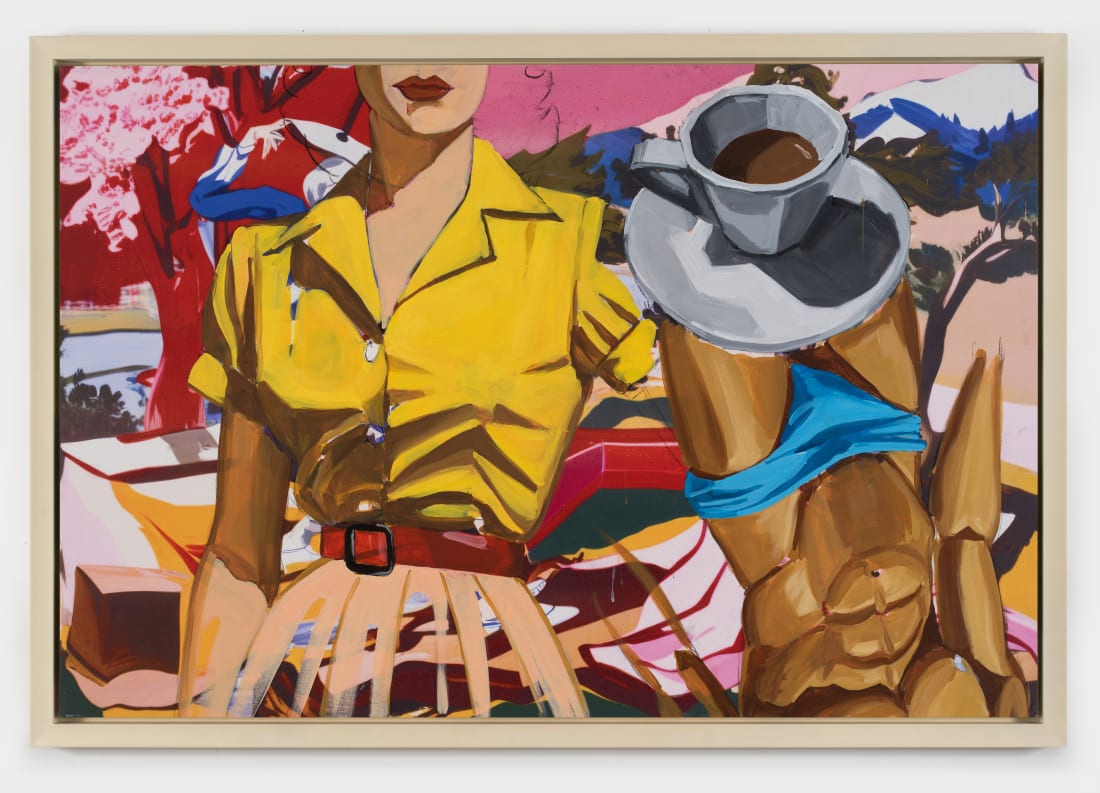
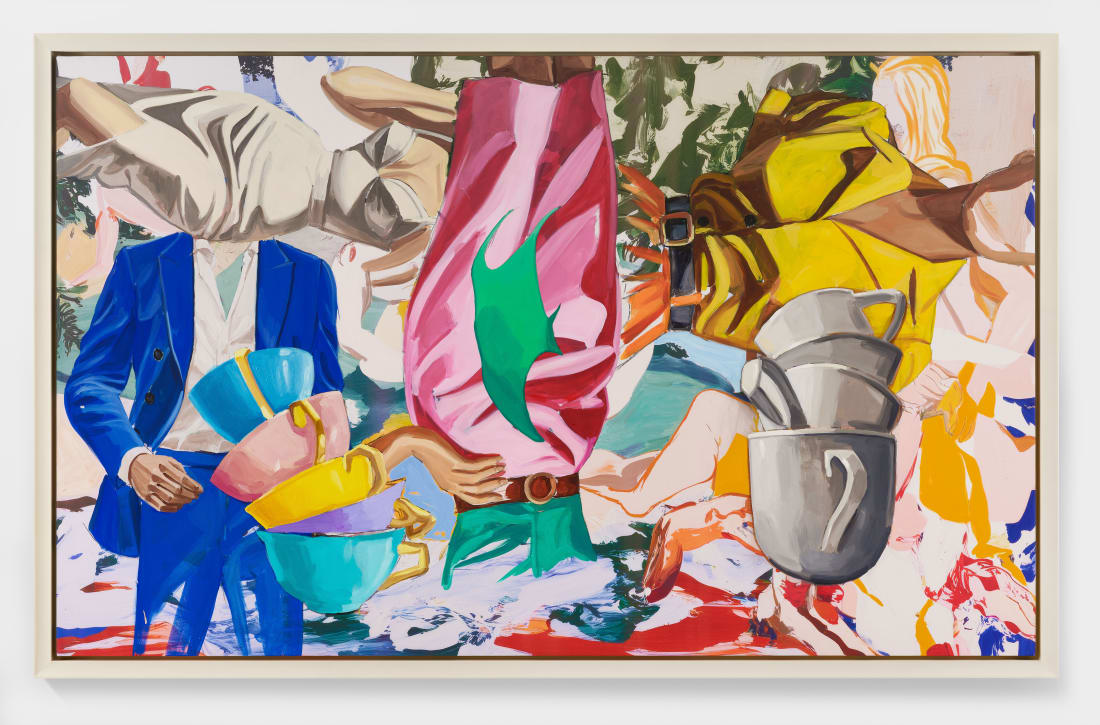
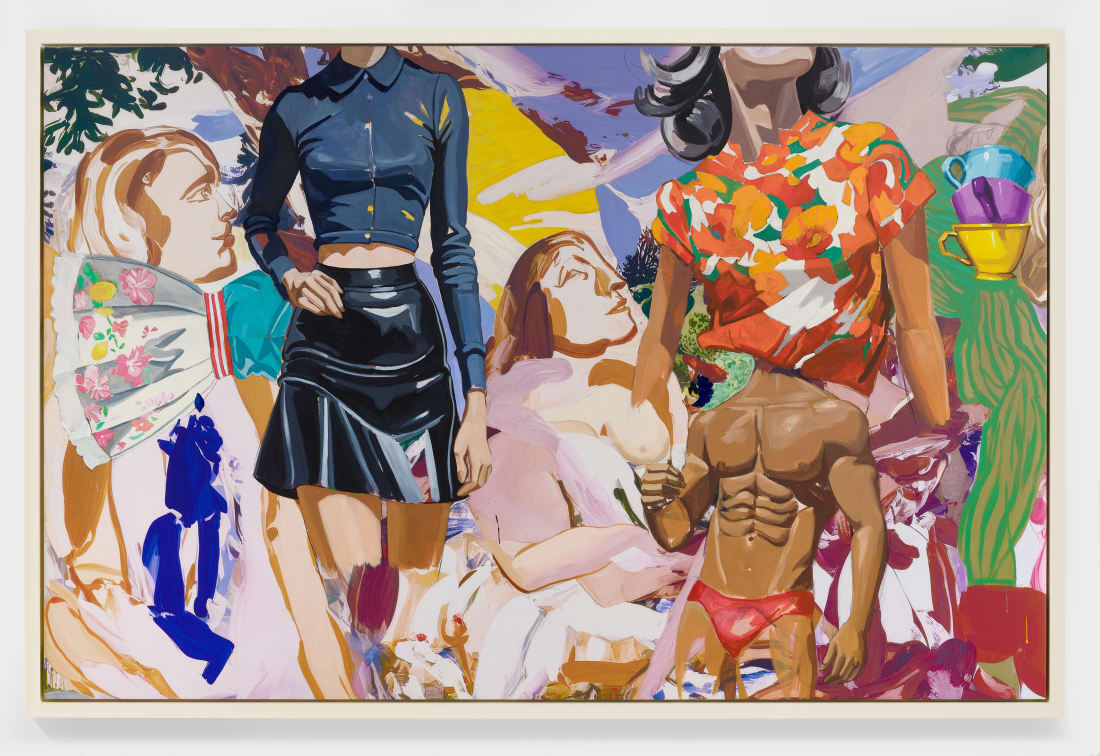
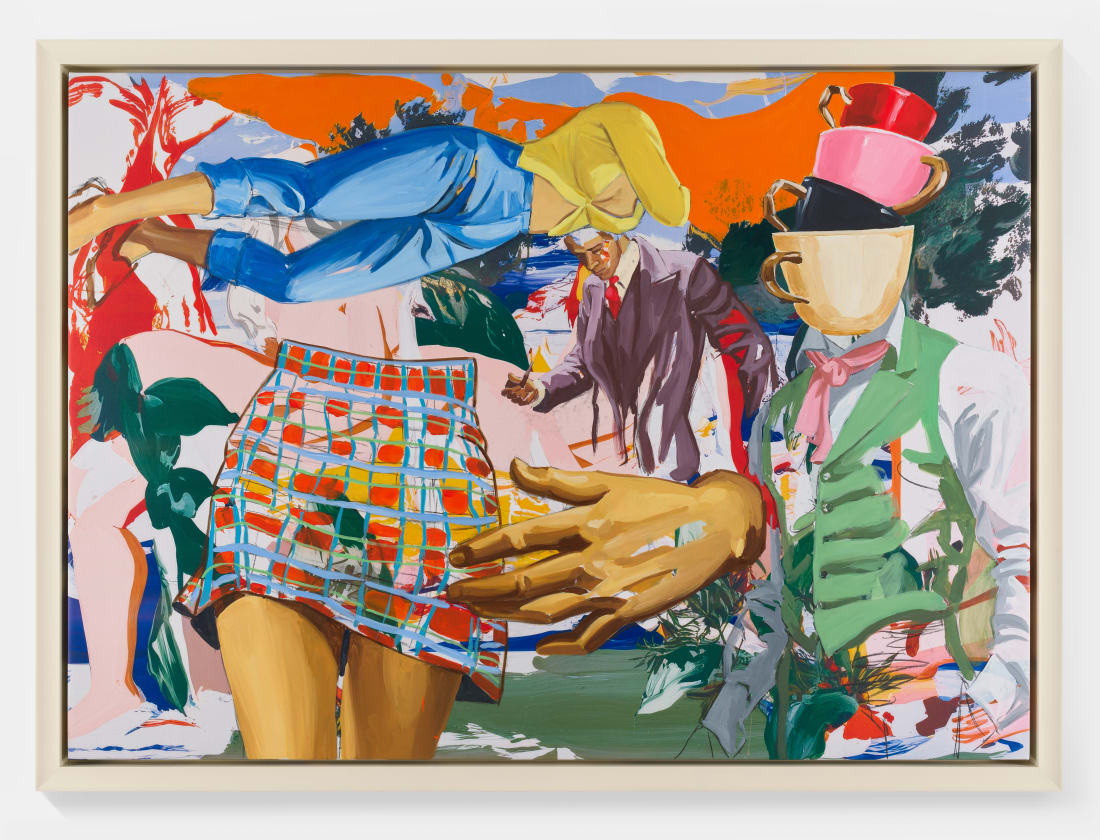
Exhibitions
News and Press
News and Press
Institutional Exhibitions & Projects
Publikationen



Videos

